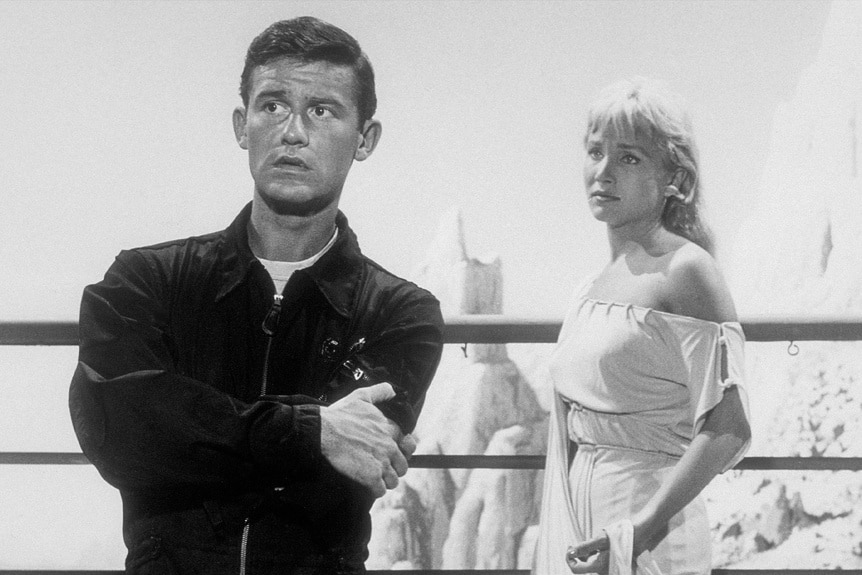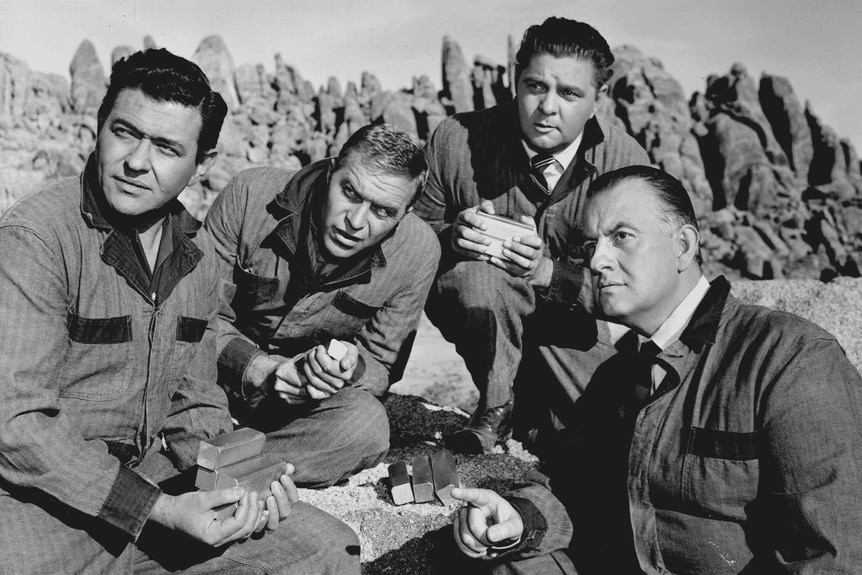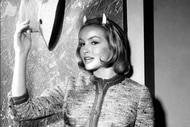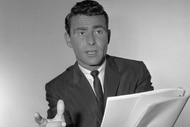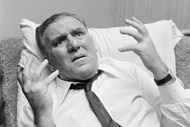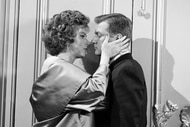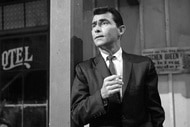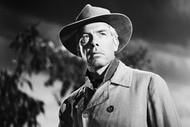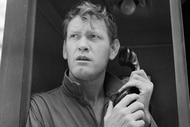Three Classic Twilight Zone Episodes Foreshadowed Rod Serling's Script for Planet of the Apes
Serling's signature twists became a staple of the original entry in the simian saga.

When The Twilight Zone (regularly airing on SYFY) came to an end in 1964, creator Rod Serling didn't rest on his laurels. He continued to work within the creative spaces of film and television, though his subsequent projects — such as The Loner and Night Gallery — never quite reached the same rarified air as the groundbreaking anthology that made him a household name throughout the country.
With that said, the writer's pre-Shyamalan penchant for delivering unforeseen plot twists didn't die with the cancelation of The Twilight Zone, it simply lived on via new titles like the original Planet of the Apes (1968). Serling, who ended up with a co-credit on the movie's shooting script, called on a few familiar Twilight Zone story beats for the iconic simian saga.
For More on The Twilight Zone:
How An Actor's Real-Life Injury Made One Twilight Zone Episode Even Creepier
How the Real-Life Trial of a Nazi War Criminal Inspired This Classic Episode of The Twilight Zone
This Iconic Twilight Zone Villain Was Even More Terrifying in The Original Short Story
The Twilight Zone Episodes That Paved the Way for Rod Serling's Planet of the Apes Script
"I Shot an Arrow into the Air" (Season 1)
Based on a story idea from Madelon Champion (Serling immediately bought the pitch for $500 right after hearing it), "I Shot an Arrow into the Air" follows the surviving crew members of a rocket ship that supposedly crash-lands on a desolate asteroid somewhere in our solar system. Colonel Donlin (Edward Binns) and Pierson (Ted Otis) are committed to preserving the chain of command, while the craven Officer Corey (Dewey Martin) quickly devolves into a state of panicky survival. He'll do anything to keep himself alive for as long as possible, even going so far as to murder his own colleagues in order to steal their supply of water. When he's the only one left, however, Corey makes a shocking discovery: The ship never left the Earth, but crashed in a swath of harsh desert near Reno. Realizing he gave up his morality for nothing, the sole survivor breaks down in tears, apologizing in vain to the men he struck down in cold blood.
The whole "we-were-on-Earth-the-whole-time" twist would, of course, serve as the basis for the ending of Apes when Taylor (Charlton Heston) stumbles upon the half-buried Statue of Liberty.
"People Are Alike All Over" (Season 1)
Another tale of ill-fated space travel, "People Are Alike All Over" was adapted by Serling from Paul W. Fairman's short story, "Brothers Beyond the Void." Future Planet of the Apes star Roddy McDowall and Paul Comi lead the episode as Sam Conrad and Warren Marcusson, a pair of astronauts on a mission to explore Mars. Marcusson dies from internal injuries after the ship crashes, but not before reminding a terrified Conrad that if Mars does contain any kind of sentient species, it can't be too dissimilar from humans back on Earth. Indeed, the residents of the Red Planet resemble tunic-wearing bipeds, though their civilization is hinted to be far more advanced than our own (a talent for telepathy allows them to read minds and break down intergalactic language barriers). The unnamed people of Mars seem kindly and benign as they construct a simulacrum of a comfortable Earth home for Mr. Conrad, who soon learns that his new home is nothing more than a permanent zoo enclosure.
This unexpected reversal of man's so-called dominance over his environment, the idea of humans becoming an exotic oddity to be gawked at through the bars of a cage, later became one of the core tenets in Planet of the Apes.
"The Rip Van Winkle Caper" (Season 2)
Not based on any existing story, "The Rip Van Winkle Caper" follows a group of four career criminals who rob a train shipment of gold bullion before going into a state of hibernation for a period of 100 years inside a desert cave (the rational being that anyone chasing them will be long dead once they awake). The felons are placed into a state of suspended animation with a special type of gas designed by the heist's mastermind, a scientist named Farwell (Oscar Beregi Jr.). The men awaken sometime later, with demolitions expert and all-around sociopath DeCruz (Simon Oakland) seriously doubting whether the gas did its job properly. After all, why do they look the same? If they've been asleep for a century, why don't they have beards and long fingernails? That skepticism suddenly evaporates when they learn the terrible fate of their mechanical engineer, Erbie (John Mitchum), whose glass hibernation chamber was compromised by a falling rock. With no gas to keep him preserved, the man simply wasted away into a skeleton.
Planet of the Apes presents an almost-identical scenario within its first 10 minutes as Taylor and the other astronauts awake to find the mummified remains of Stewart (Dianne Stanley), whose cryo-pod sustained a lethal crack somewhere along the interstellar journey.
Classic episodes of The Twilight Zone air regularly on SYFY. Click here for complete scheduling info!




